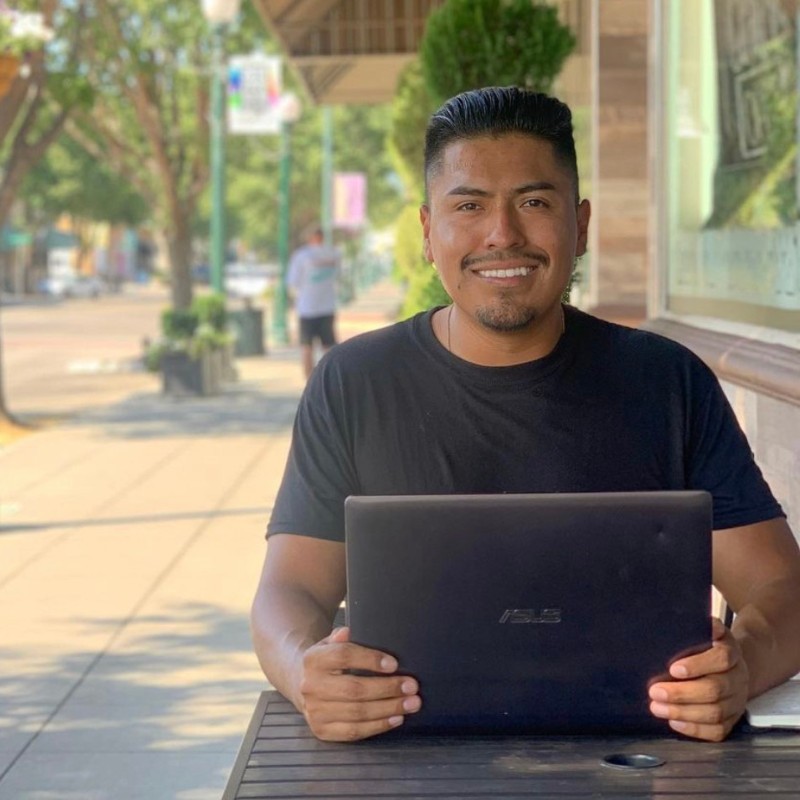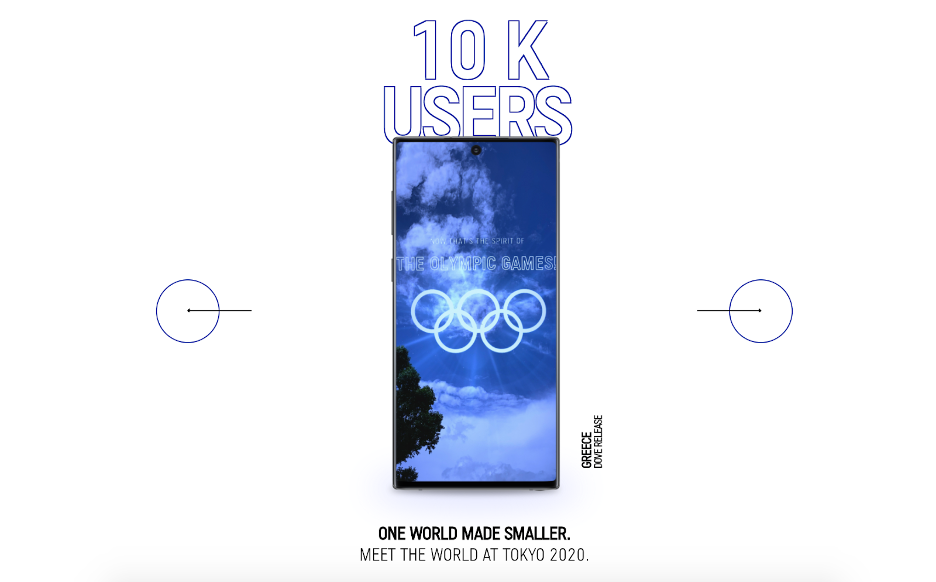The Olympics’ Direct-to-Consumer Marketing Strategy Goes Digital
BY: Jose Quiroz | July 29, 2021 – 5 MIN READ

The Olympics’ Direct-to-Consumer Marketing Strategy Goes Digital
BY: Jose Quiroz | July 29, 2021 – 5 MIN READ

Key Takeaways (5-minute read)
- In 2020, the Olympics claimed it would switch to a direct-to-consumer marketing approach.
- Some Tokyo 2020 Olympic Games brand sponsors are distancing themselves.
- Digital innovation is the answer, from the Olympic Channel to all-new user experiences for fans worldwide.
Some brands are born with marketing prowess, while others have marketing thrust upon them. Last year, when the 2020 Tokyo Olympics were postponed due to COVID-19, there were many questions about how to continue marketing the games throughout 2020 and 2021—or if they should still hold the event at all. While some Olympic brand sponsors, such as Visa, Nike, P&G, and Airbnb, held strong to their ties to the games, others have drifted away in an attempt to distance themselves from controversy over coronavirus safety issues and other bad press surrounding the Tokyo takeover. International Olympic Committee (IOC) marketing director, Christopher Carroll, claimed in March of 2020 that to keep the Olympics and Paralympics top of mind with fans until competitions could take place, the Olympics as a brand would take on a more direct-to-consumer marketing approach with a focus on digital content creation.
“I would never have dreamed of having to take such a digitally-led approach,” said Carroll, who has now been named the IOC’s director of digital engagement, in an interview one year ago. He and his team thrust the might of their efforts into linear television marketing, particularly with content creation for the Olympics’ social media channels and the Olympic Channel, its TV platform. The online channel allows subscribers to input their preferences for content, so the Olympic Channel can help filter and suggest the most relevant content to the viewer.
“We need to think globally but act locally, serving a personal and localized experience,” Carroll explained. “If you’re a hockey fan from Glasgow and you exchange your preferences with us, we’ll be able to cater your content preferences through our own Olympic channel as well as through our digital partnerships.”
The IOC started marketing the 2021 event switch on The Olympic Channel as quickly as possible to both educate fans and keep up brand awareness. This started in July 2020 with the “#1YeartoGo” campaign video. Rallying viewers with hope for the future and a focus on overcoming struggle, the commercial is a beautiful testament to all the things the Olympics stand for and the message that people needed in mid-2020 when nothing seemed certain.
With a goal to create more “people-centric” and “digital-led” content, IOC put a huge focus on beefing up the Olympic Channel’s streaming content to include thousands of hours of archived content, new original programming, and, now that the games are here at last, live event-streaming so fans never have to miss a thing.
So, how do you keep fans engaged in sports when they can’t be there in person? The IOC has an answer for that, as well, and it’s all about digital strategy and creating consumer brand experiences. In conjunction with the Olympic Channel, NBCUniversal, Discovery Eurosport, and other broadcasting partners, the Tokyo 2020 games are breaking records and are expected to have twice the TV coverage of the Rio 2016 Olympics.
Fans who want to get even more personal experiences can thank the Olympic Broadcasting Services (OBS) and the Tokyo 2020 Organizing Committee and Olympic broadcast partners (RHBs) for starting the “Share the Passion” projects. It will bring fans virtually into the stadium and Olympic Village with user experiences that include a Fan Video Matrix for viewing and being viewed within the stadium, the Cheer Map with a “cheer” button available on many broadcasters’ streaming platforms that then broadcasts “cheer activity” into the stadium, and the Athlete Moment – Family & Friends where Olympic athletes will be able to video chat live with their family and friends after their competitions. These are just a few of the unique user experiences available to Olympics fans this year—see more here.
Photo courtesy of Olympic Broadcasting Services (OBS)
“Our ambition is to bring the magic of the athletes’ achievements to the world on an unprecedented scale,” said OBS CEO Yiannis Exarchos. “Technology is going to play a critical role and allow us to bring fans ‘inside the venue’ virtually. This is an important ambition, not just for the fans, but also for the athletes as they compete on the world’s biggest stage . . . We also believe these new digital innovations will leave a legacy which we will build on at future editions of the Olympic Games.”
Content creation has been the name of the (Olympic) game for the IOC throughout the second half of 2020 and in 2021 leading up to the Tokyo Torch. The Olympics YouTube even hosted a massive online workout with Olympic athletes for Olympic Day on July 23, 2020, giving fans the chance to train like an Olympian with their idols. This type of direct-to-consumer marketing affirmed IOC’s place among leading brands in digital consumer marketing. From partnering with influencers such as the Try Guys to bringing fans up-close and personal with the athletes themselves (at a safe digital distance), Carroll’s brand strategy is clear and its execution is robust.
“Tokyo 2020 will be the most connected Olympic Games ever and we, along with tremendous support from our global partners, have created enhanced digital experiences to engage with fans before, during, and after the Games,” Carroll said last week. “These offerings are designed around the ambition to not only connect with fans around the world but also to create something memorable that will inspire people through the values of the Olympics.”
With some sponsors—mostly the domestic Japanese ones whose contracts only applied to the Tokyo 2020 games—announcing they would cancel ad campaigns, forego attendance at the opening ceremonies, or cancel booths and events during the Olympics, it is more important than ever for the Olympics to market itself instead of relying on its sponsors for messaging to consumers.
Still, sponsor brand collaborations are making the digital experience even more amazing for fans around the globe for Tokyo 2020.
Take Samsung’s World Lens app, for example—offering users a platform for “Experience new cultures through AR, break down barriers, and connect to each other on a whole new level.”
Samsung + the IOC present the new World Lens app for Tokyo 2020 Olympics
In a brave new world where human connection is craved more than ever, yet health and safety concerns still prevent many from connecting in person, the Olympics’ direct-to-consumer marketing initiative hits its bullseye. Utilizing content creation, digital innovation, and a focus on people, hope, and perseverance, Tokyo 2020’s marketing efforts are shaping up to be the way of the future.
About A&P
A&P, a brand agency, excels in finding innovative ways for clients to provide exceptional experiences to their customers. Their work includes consumer insight, brand innovation, creative development, mobile and technology solutions for global brands such as AT&T, Mini USA, DIRECTV, Newell Rubbermaid, Tenet Healthcare, and Barco Escape. For more information about A&P, visit them on Facebook, Twitter or antonioandparis.com.
Key Takeaways (5-minute read)
- In 2020, the Olympics claimed it would switch to a direct-to-consumer marketing approach.
- Some Tokyo 2020 Olympic Games brand sponsors are distancing themselves.
- Digital innovation is the answer, from the Olympic Channel to all-new user experiences for fans worldwide.
Some brands are born with marketing prowess, while others have marketing thrust upon them. Last year, when the 2020 Tokyo Olympics were postponed due to COVID-19, there were many questions about how to continue marketing the games throughout 2020 and 2021—or if they should still hold the event at all. While some Olympic brand sponsors, such as Visa, Nike, P&G, and Airbnb, held strong to their ties to the games, others have drifted away in an attempt to distance themselves from controversy over coronavirus safety issues and other bad press surrounding the Tokyo takeover. International Olympic Committee (IOC) marketing director, Christopher Carroll, claimed in March of 2020 that to keep the Olympics and Paralympics top of mind with fans until competitions could take place, the Olympics as a brand would take on a more direct-to-consumer marketing approach with a focus on digital content creation.
“I would never have dreamed of having to take such a digitally-led approach,” said Carroll, who has now been named the IOC’s director of digital engagement, in an interview one year ago. He and his team thrust the might of their efforts into linear television marketing, particularly with content creation for the Olympics’ social media channels and the Olympic Channel, its TV platform. The online channel allows subscribers to input their preferences for content, so the Olympic Channel can help filter and suggest the most relevant content to the viewer.
“We need to think globally but act locally, serving a personal and localized experience,” Carroll explained. “If you’re a hockey fan from Glasgow and you exchange your preferences with us, we’ll be able to cater your content preferences through our own Olympic channel as well as through our digital partnerships.”
The IOC started marketing the 2021 event switch on The Olympic Channel as quickly as possible to both educate fans and keep up brand awareness. This started in July 2020 with the “#1YeartoGo” campaign video. Rallying viewers with hope for the future and a focus on overcoming struggle, the commercial is a beautiful testament to all the things the Olympics stand for and the message that people needed in mid-2020 when nothing seemed certain.
With a goal to create more “people-centric” and “digital-led” content, IOC put a huge focus on beefing up the Olympic Channel’s streaming content to include thousands of hours of archived content, new original programming, and, now that the games are here at last, live event-streaming so fans never have to miss a thing.
So, how do you keep fans engaged in sports when they can’t be there in person? The IOC has an answer for that, as well, and it’s all about digital strategy and creating consumer brand experiences. In conjunction with the Olympic Channel, NBCUniversal, Discovery Eurosport, and other broadcasting partners, the Tokyo 2020 games are breaking records and are expected to have twice the TV coverage of the Rio 2016 Olympics.
Fans who want to get even more personal experiences can thank the Olympic Broadcasting Services (OBS) and the Tokyo 2020 Organizing Committee and Olympic broadcast partners (RHBs) for starting the “Share the Passion” projects. It will bring fans virtually into the stadium and Olympic Village with user experiences that include a Fan Video Matrix for viewing and being viewed within the stadium, the Cheer Map with a “cheer” button available on many broadcasters’ streaming platforms that then broadcasts “cheer activity” into the stadium, and the Athlete Moment – Family & Friends where Olympic athletes will be able to video chat live with their family and friends after their competitions. These are just a few of the unique user experiences available to Olympics fans this year—see more here.
Photo courtesy of Olympic Broadcasting Services (OBS)
“Our ambition is to bring the magic of the athletes’ achievements to the world on an unprecedented scale,” said OBS CEO Yiannis Exarchos. “Technology is going to play a critical role and allow us to bring fans ‘inside the venue’ virtually. This is an important ambition, not just for the fans, but also for the athletes as they compete on the world’s biggest stage . . . We also believe these new digital innovations will leave a legacy which we will build on at future editions of the Olympic Games.”
Content creation has been the name of the (Olympic) game for the IOC throughout the second half of 2020 and in 2021 leading up to the Tokyo Torch. The Olympics YouTube even hosted a massive online workout with Olympic athletes for Olympic Day on July 23, 2020, giving fans the chance to train like an Olympian with their idols. This type of direct-to-consumer marketing affirmed IOC’s place among leading brands in digital consumer marketing. From partnering with influencers such as the Try Guys to bringing fans up-close and personal with the athletes themselves (at a safe digital distance), Carroll’s brand strategy is clear and its execution is robust.
“Tokyo 2020 will be the most connected Olympic Games ever and we, along with tremendous support from our global partners, have created enhanced digital experiences to engage with fans before, during, and after the Games,” Carroll said last week. “These offerings are designed around the ambition to not only connect with fans around the world but also to create something memorable that will inspire people through the values of the Olympics.”
With some sponsors—mostly the domestic Japanese ones whose contracts only applied to the Tokyo 2020 games—announcing they would cancel ad campaigns, forego attendance at the opening ceremonies, or cancel booths and events during the Olympics, it is more important than ever for the Olympics to market itself instead of relying on its sponsors for messaging to consumers.
Still, sponsor brand collaborations are making the digital experience even more amazing for fans around the globe for Tokyo 2020.
Take Samsung’s World Lens app, for example—offering users a platform for “Experience new cultures through AR, break down barriers, and connect to each other on a whole new level.”
Samsung + the IOC present the new World Lens app for Tokyo 2020 Olympics
In a brave new world where human connection is craved more than ever, yet health and safety concerns still prevent many from connecting in person, the Olympics’ direct-to-consumer marketing initiative hits its bullseye. Utilizing content creation, digital innovation, and a focus on people, hope, and perseverance, Tokyo 2020’s marketing efforts are shaping up to be the way of the future.
About A&P
A&P, a brand agency, excels in finding innovative ways for clients to provide exceptional experiences to their customers. Their work includes consumer insight, brand innovation, creative development, mobile and technology solutions for global brands such as AT&T, Mini USA, DIRECTV, Newell Rubbermaid, Tenet Healthcare, and Barco Escape. For more information about A&P, visit them on Facebook, Twitter or antonioandparis.com.

WRITTEN BY
Jose Quiroz
Short Bio — As the VP of Digital Engagement at Antonio & Paris, Jose Quiroz continually researches and develops exciting new ways to make connections between brands and consumers through technology. Born in Orizaba, Veracruz, Jose is a “dreamer” who began his tech career over ten years ago and is now the digital operations and digital strategy specialist for this global brand studio. Although he is a digital nomad who loves traveling, backpacking, and heading wherever his laptop may take him, he strongly holds onto his family roots and Mexican culture. When he’s not learning or teaching the latest in digital strategy, you might find Jose practicing combat sports or poring over topics such as aliens, ancient civilizations, artificial intelligence, and biotechnology.

WRITTEN BY
Jose Quiroz
Short Bio — As the VP of Digital Engagement at Antonio & Paris, Jose Quiroz continually researches and develops exciting new ways to make connections between brands and consumers through technology. Born in Orizaba, Veracruz, Jose is a “dreamer” who began his tech career over ten years ago and is now the digital operations and digital strategy specialist for this global brand studio. Although he is a digital nomad who loves traveling, backpacking, and heading wherever his laptop may take him, he strongly holds onto his family roots and Mexican culture. When he’s not learning or teaching the latest in digital strategy, you might find Jose practicing combat sports or poring over topics such as aliens, ancient civilizations, artificial intelligence, and biotechnology.



